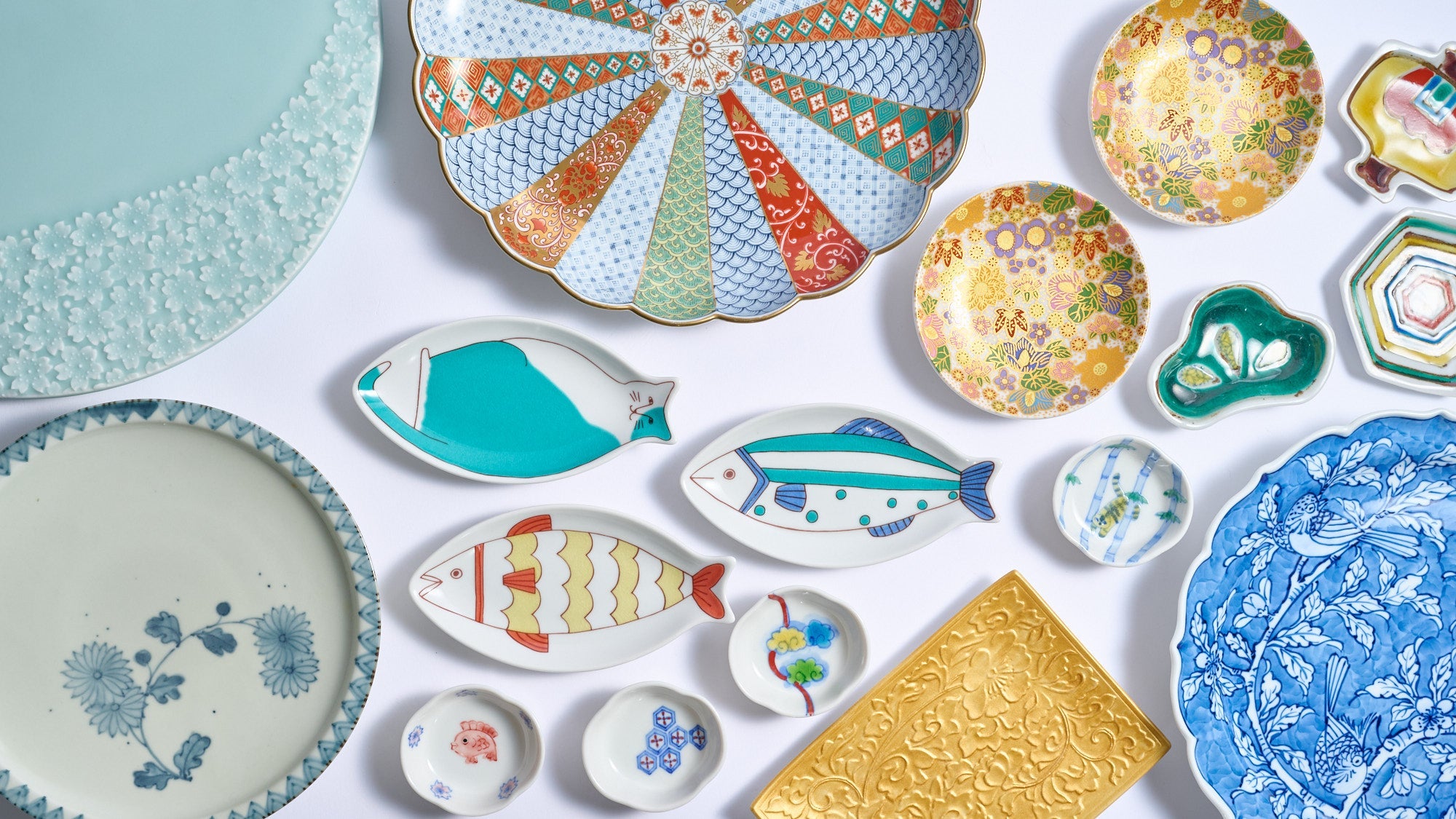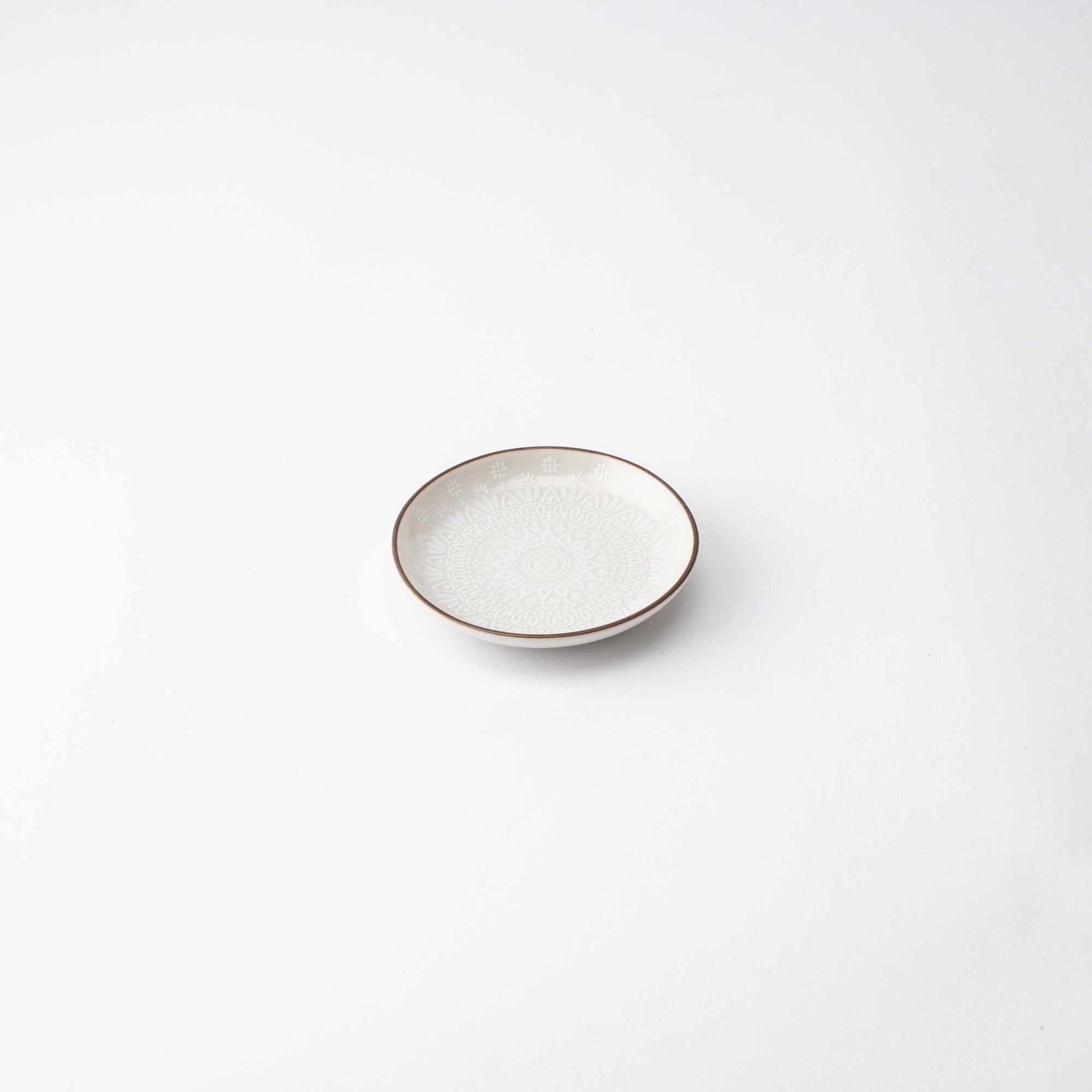
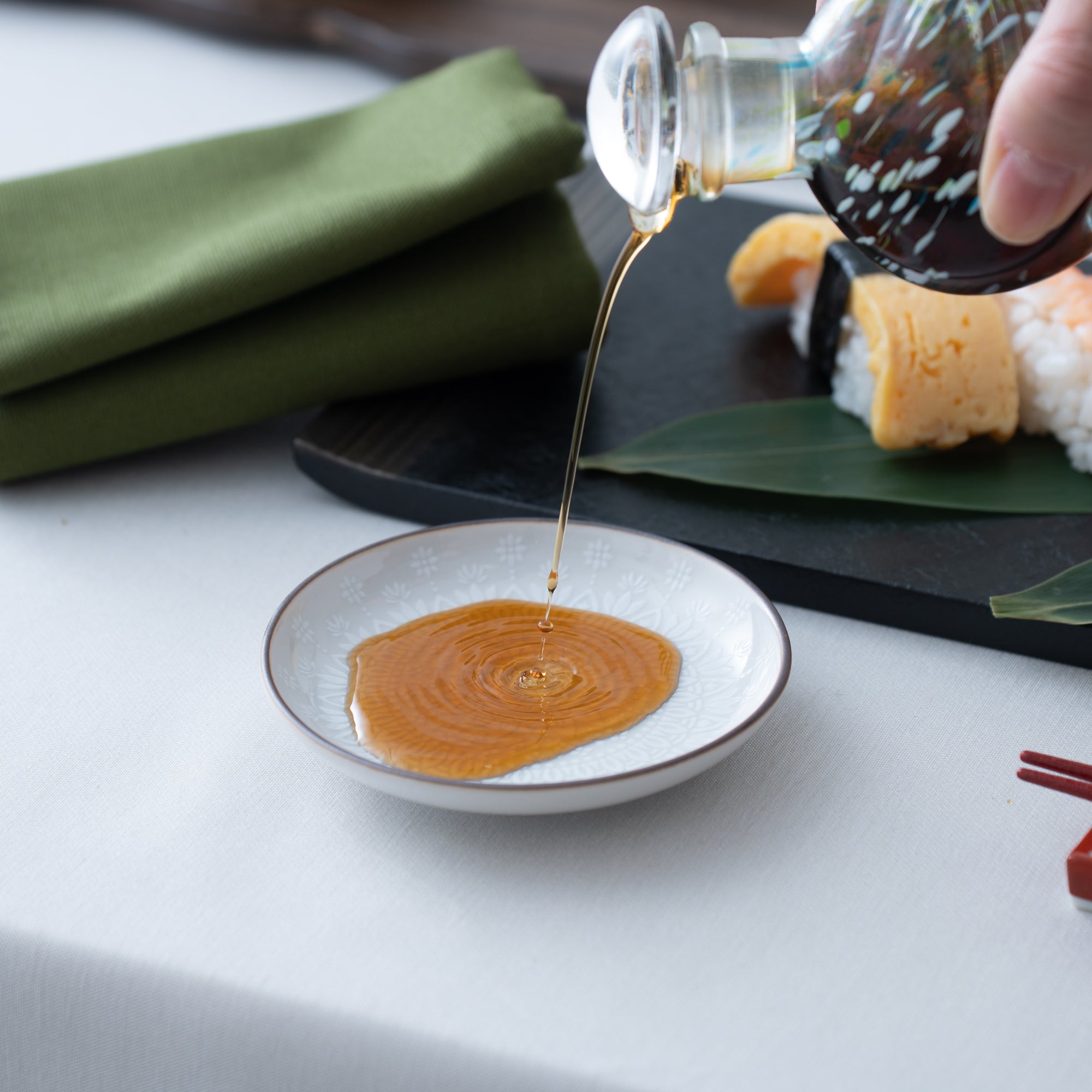
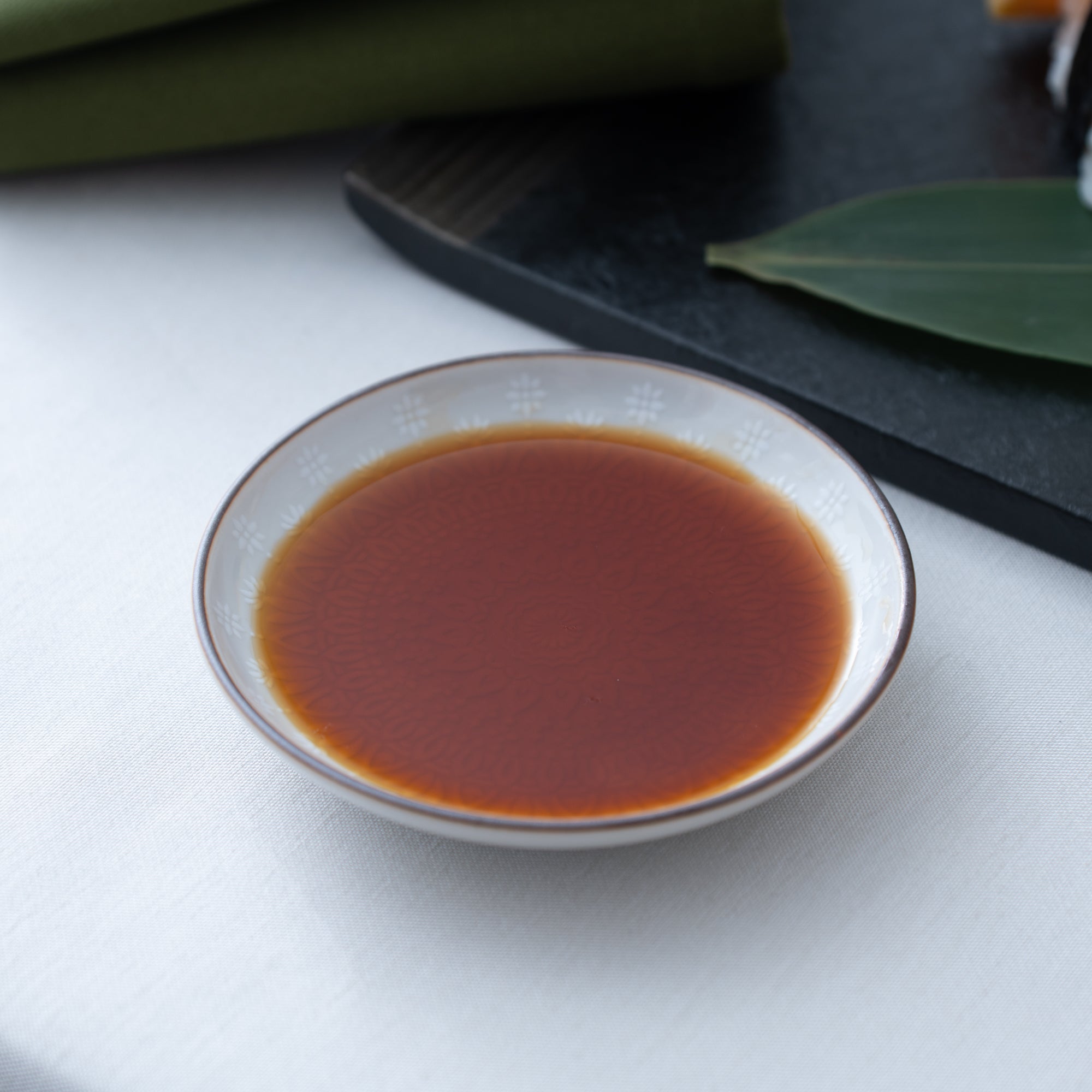
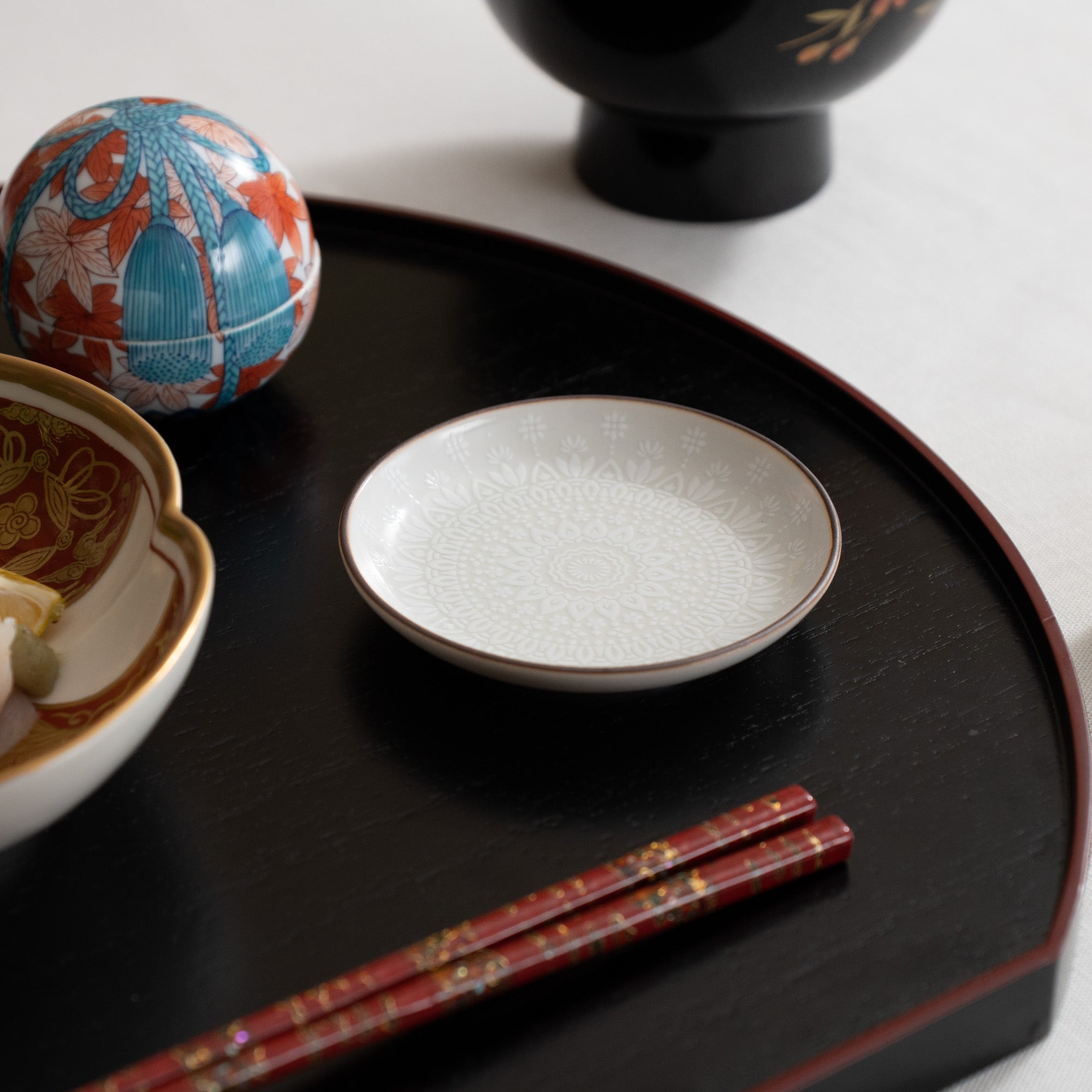
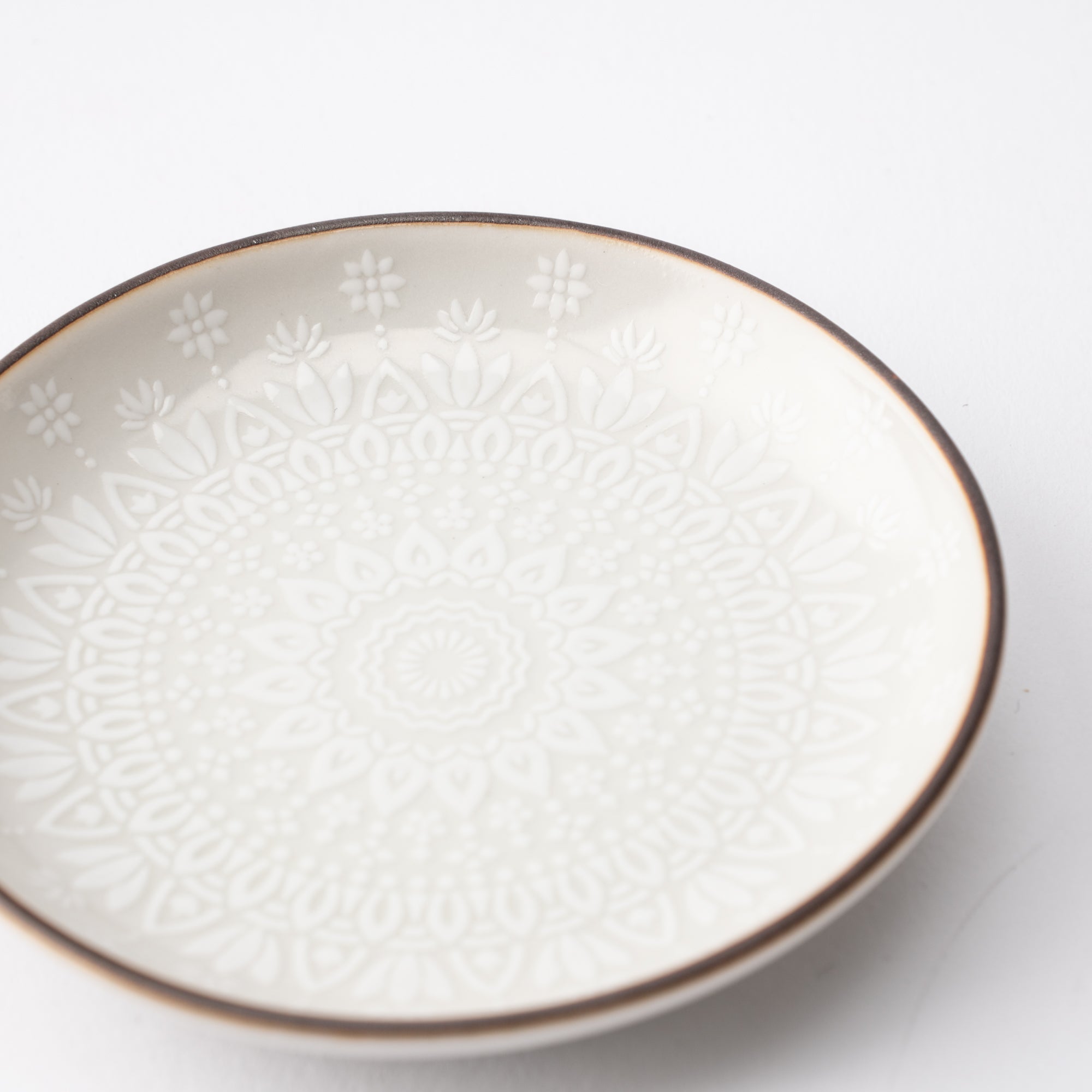
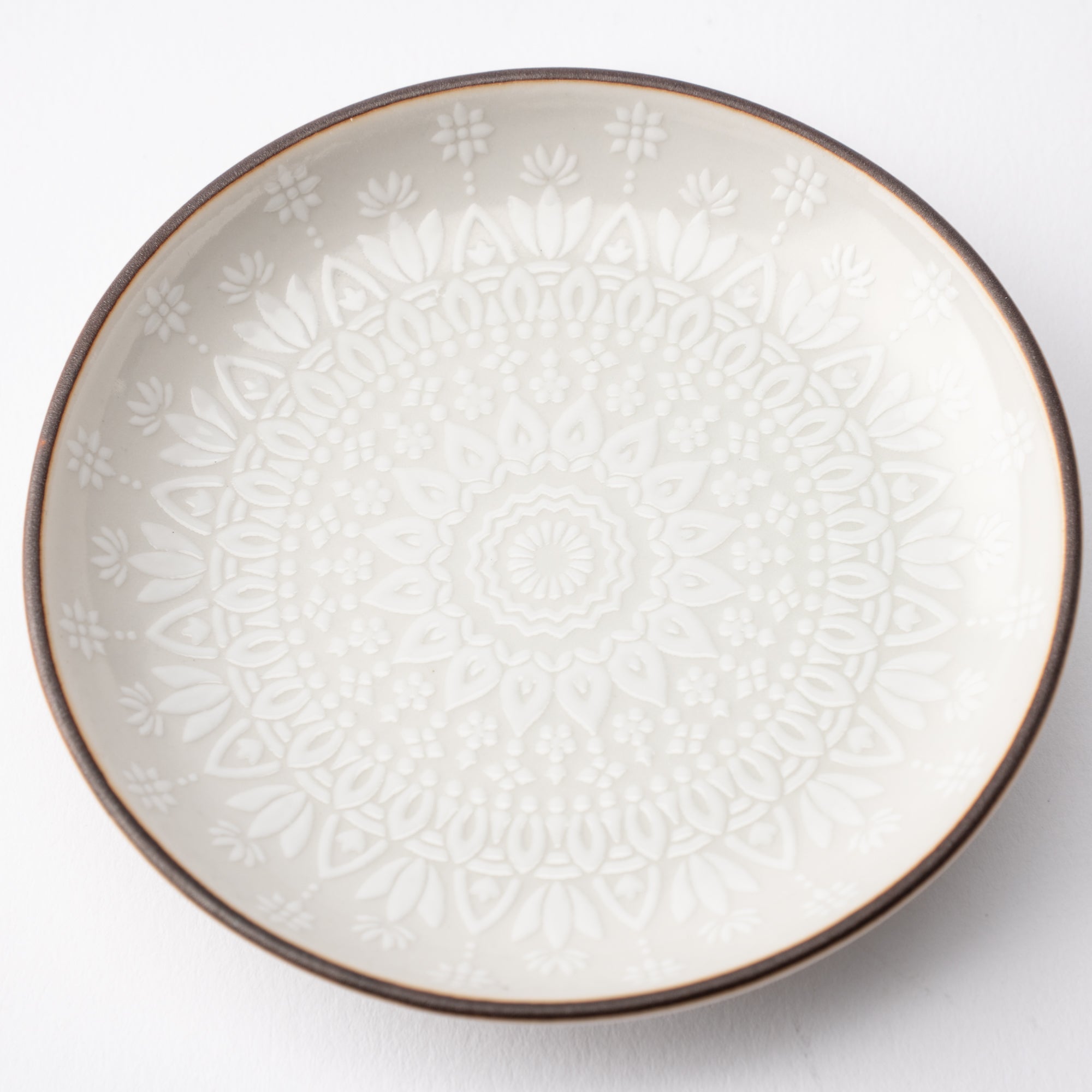
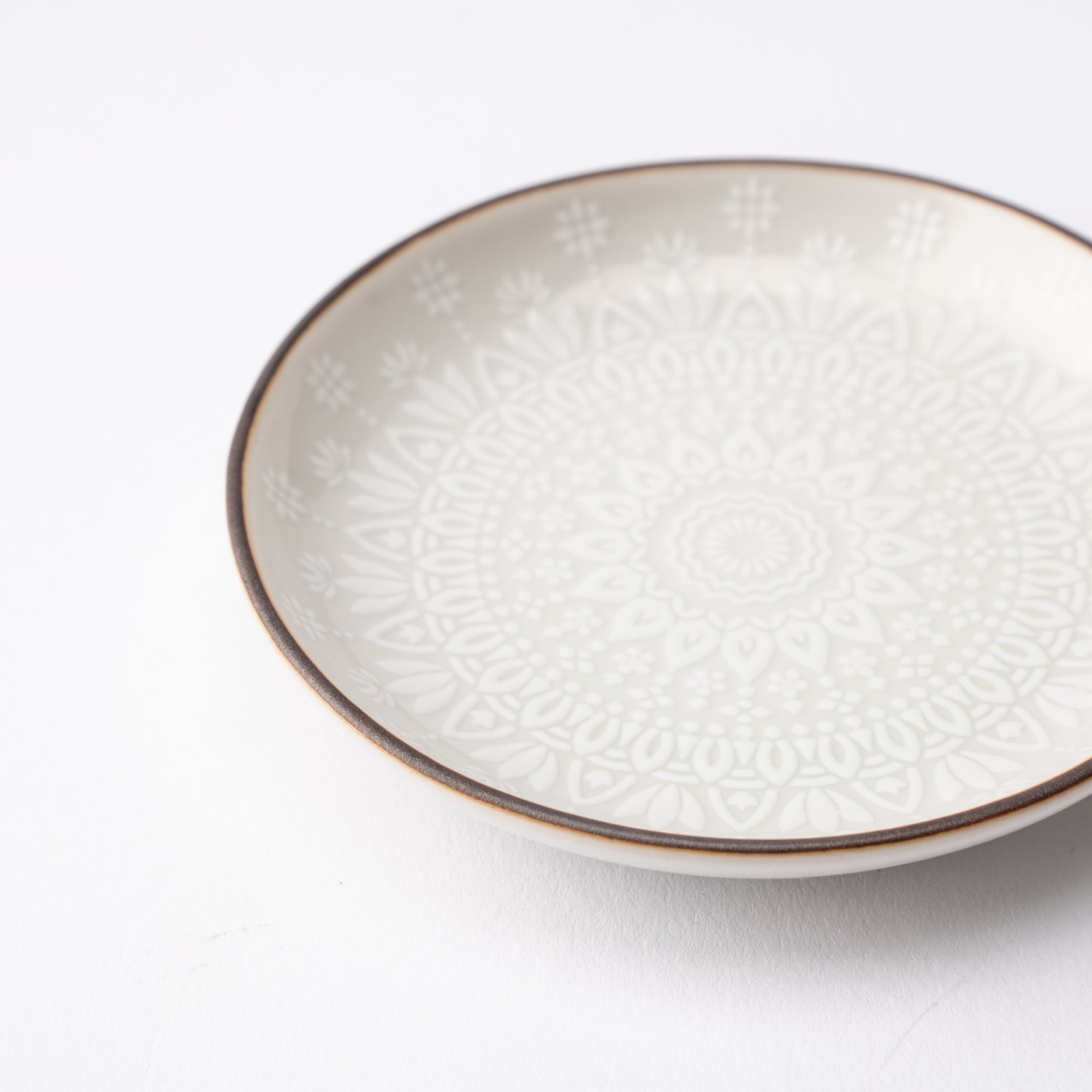
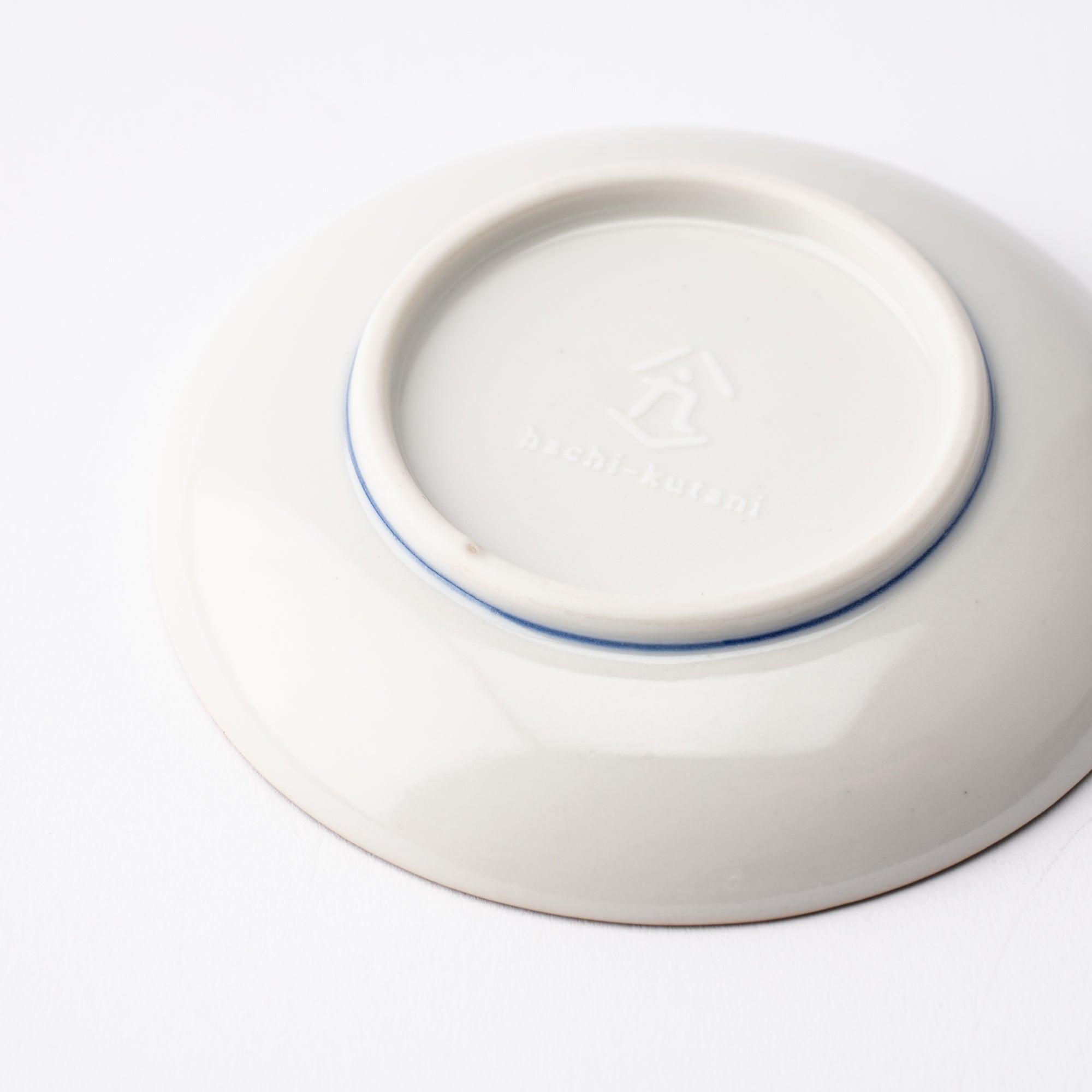
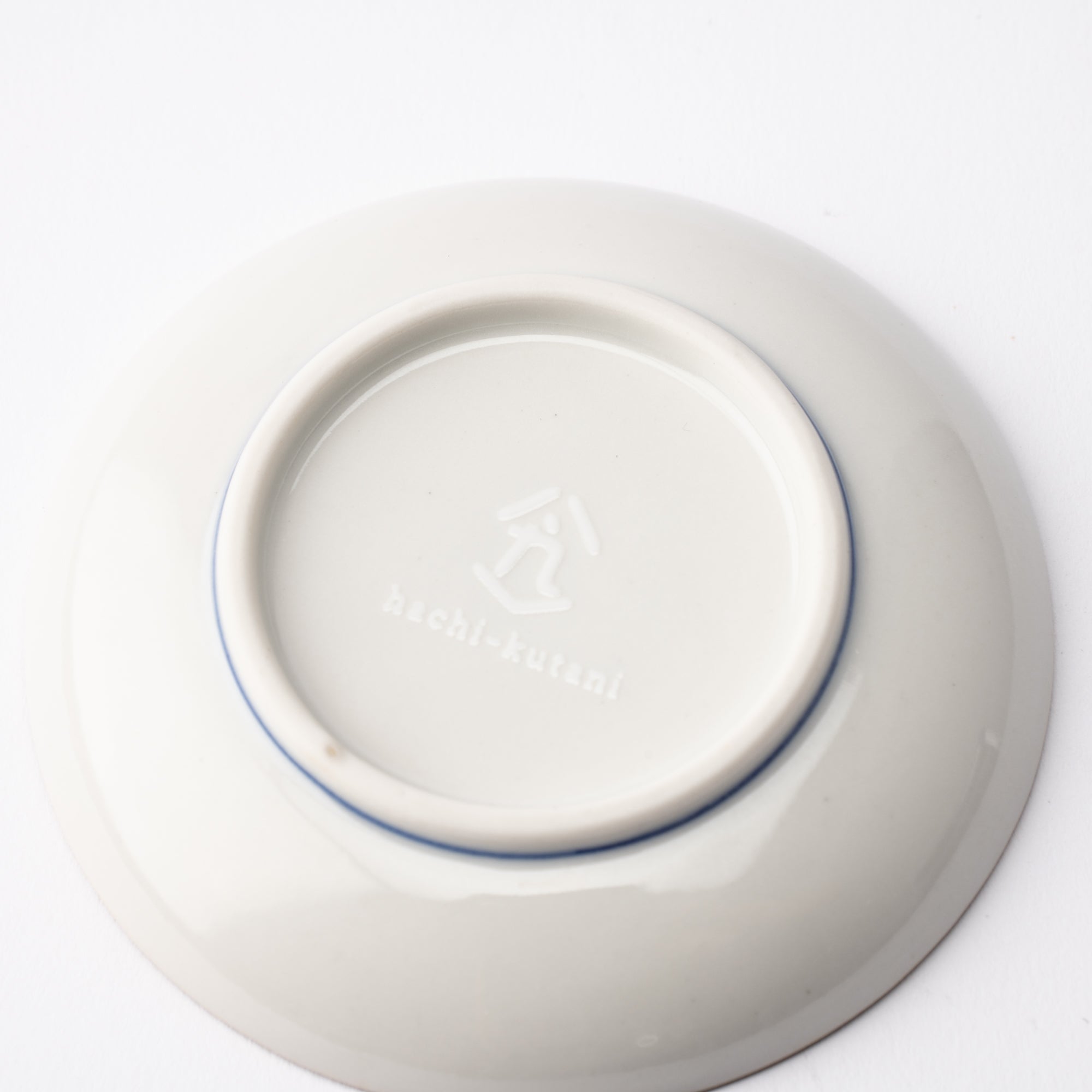
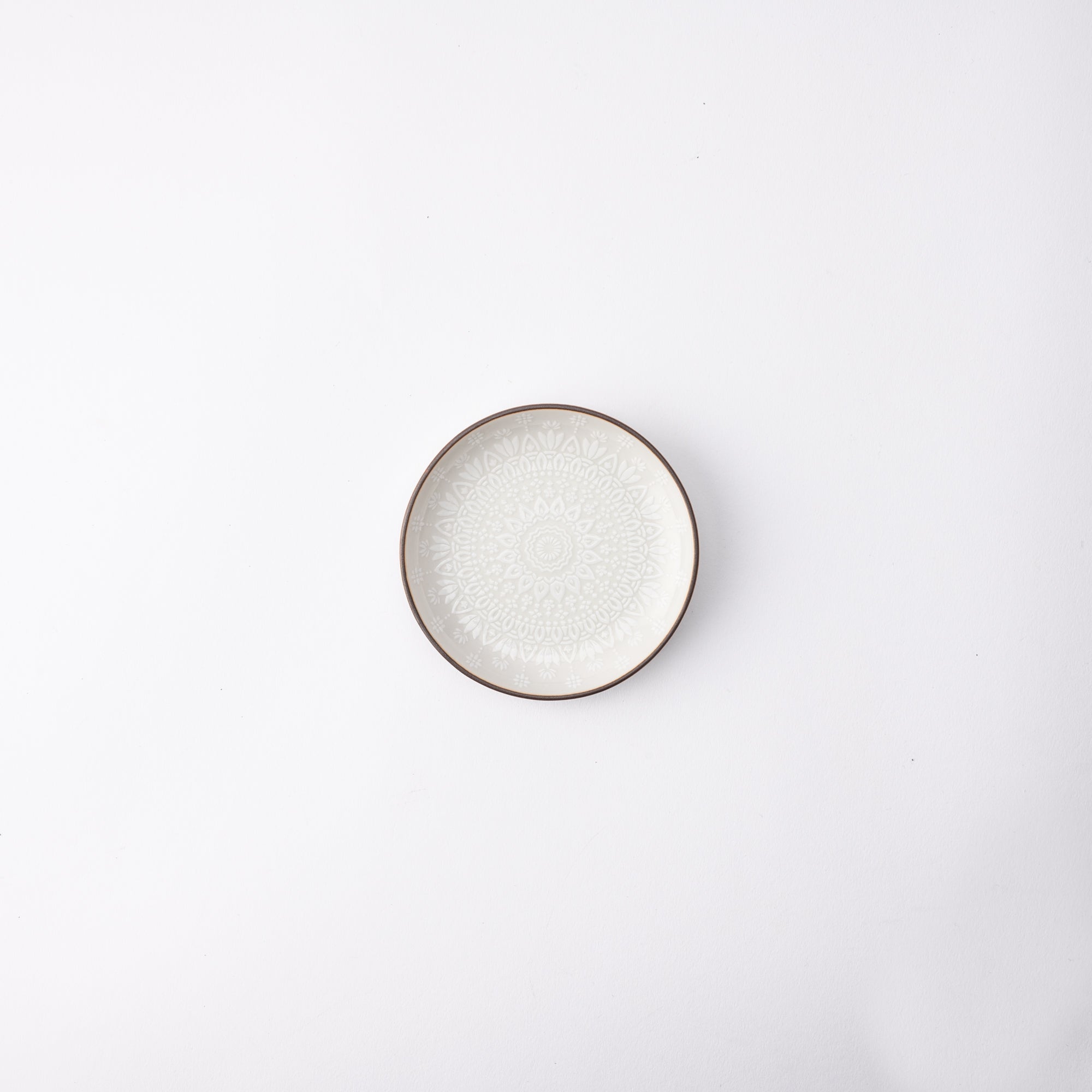
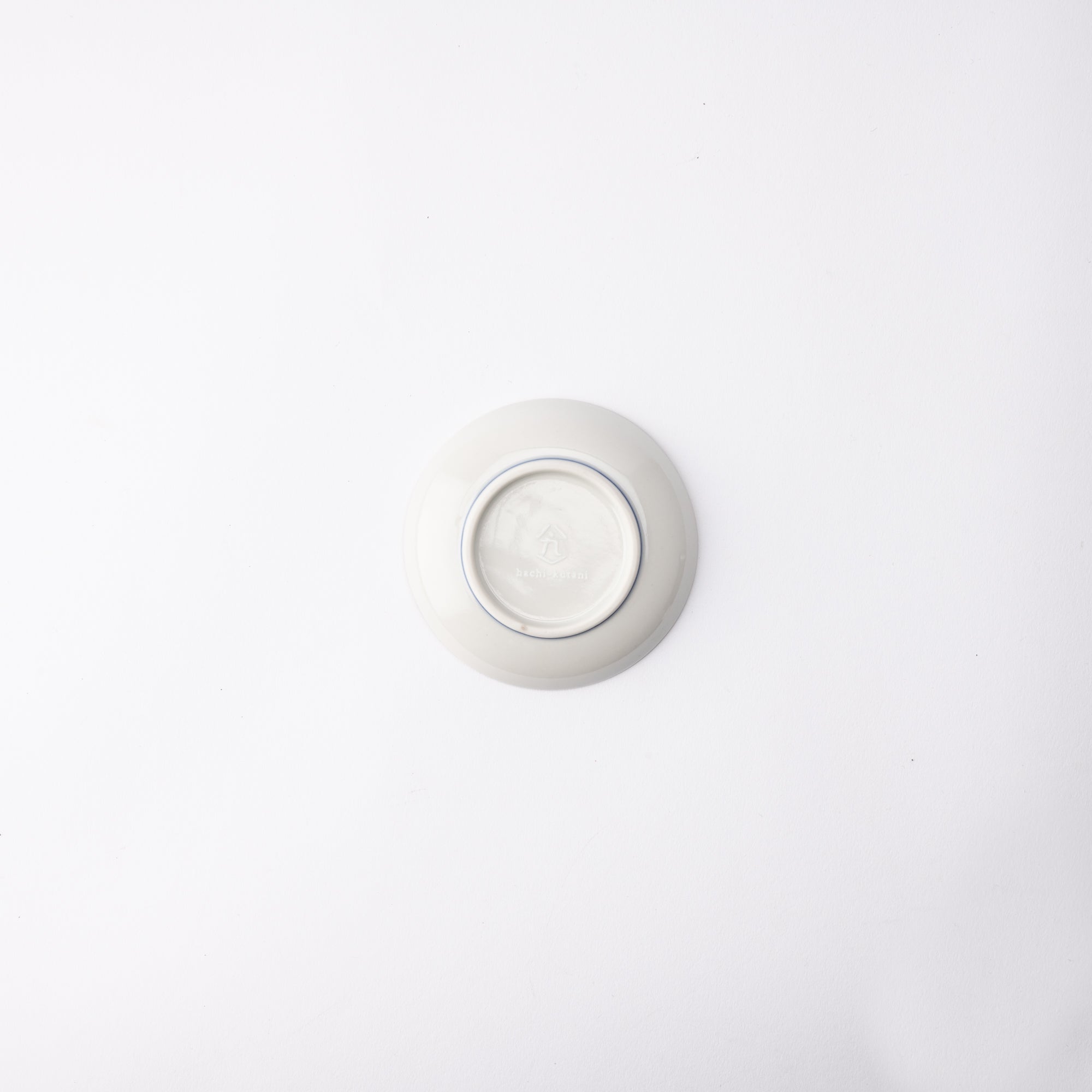
Hachi-Kutani Mandala Sauce Plate
Estimated Shipping Widget will be displayed here!
This sauce plate features a delicate mandala pattern in soft white. A mandala is a geometric arrangement of symbols. In various spiritual traditions, mandalas are used to focus attention, provide spiritual guidance, and support meditation.
While Kutani Ware is loved for its vibrant colors, the hachi-kutani series features sauce plates all in white. Thick overglaze paint with traditional Japanese paints brings out a sense of luxury. The porcelain is painted with an elegant traditional pattern, and inspired by the snow of Hakusan (Mt. Hakusan), and is trimmed with a rusty brown finish.
This small plate can be used for sauce, condiments, pickles, and other small items such as accessories. It has a beautiful and simple design that matches any item. There are eight different patterns in total, so you can choose your favorite one or use different patterns with your family.
DETAILS
| Quantity | 1 |
| Size | D 9.5 cm (3.7 in) x W 9.5 cm (3.7 in) x H 2 cm (0.8 in) |
| Material | Porcelain |
| Microwave | No |
| Dishwasher | No |
Maker / Brand
Seikou Kiln, founded in the early Taisho era (1912–1926 CE) in Nomi City, Ishikawa Prefecture, has long been dedicated to the art of Japanese overglaze painting for Kutani ware. Through years of research, the kiln perfected a high-quality technique for transferring designs and patterns using in-house printed sheets. This method preserves the transparency of glassy glazes and the depth of thick overglaze paints, achieving the same richness as traditional hand-painting. Their work has earned prestigious accolades, including recognition in the Japan Tourism Agency's Charming Japanese Souvenir Contest.
Crafts
Kutani ware is a pottery produced in the Kaga region of Ishikawa Prefecture and it has a history of over 350 years. It is characterized by the heavy brilliance of the five colors of green, yellow, red, purple, and navy blue that are applied to the bold and daring lines. Its long history has evolved through the tireless efforts and enthusiasm of people who have sought innovation while maintaining tradition.
The beauty of the various styles and methods of painting is known as "Japan Kutani" and is highly regarded around the world.
Choose options











Estimated Shipping Widget will be displayed here!
Sauce Plates
Ranging in style from elegant to kawaii, our collection of Japanese sauce plates is perfect for when you need something small yet versatile for your dining table. Conveniently sized for soy sauce and other condiments accompanying sushi or noodles, these dishes are also just right for bite-sized cheese, nuts, and appetizers. A must-have for any meal.
This category includes plates with diameters under 12.9 cm (5.1 in).
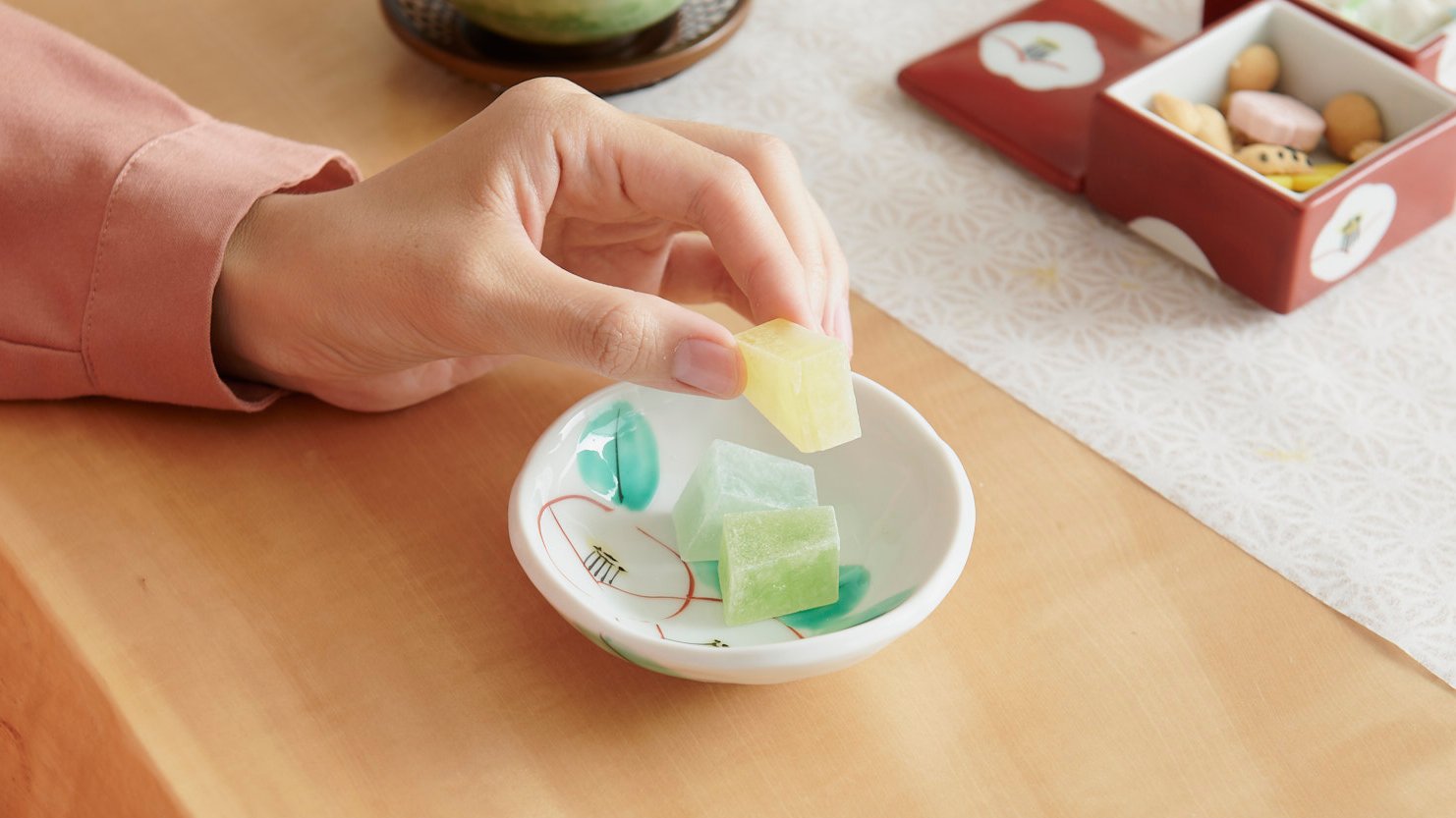
White
White carries the essence of purity, cleanliness, and sophistication. White tableware's achromatic simplicity and reflective nature blend seamlessly into any setting, enhancing table design with a modern, clean charm and creating a feeling of spaciousness and light.
In Japan, shiro iro, the color white, is held in high esteem, symbolizing sanctity and divinity. This color permeates Japanese culture, from the revered white horses and deer, symbols of auspiciousness, to the soft, snow-like petals of the unohana flower praised by the poets of the Heian period (794 CE–1158 CE).
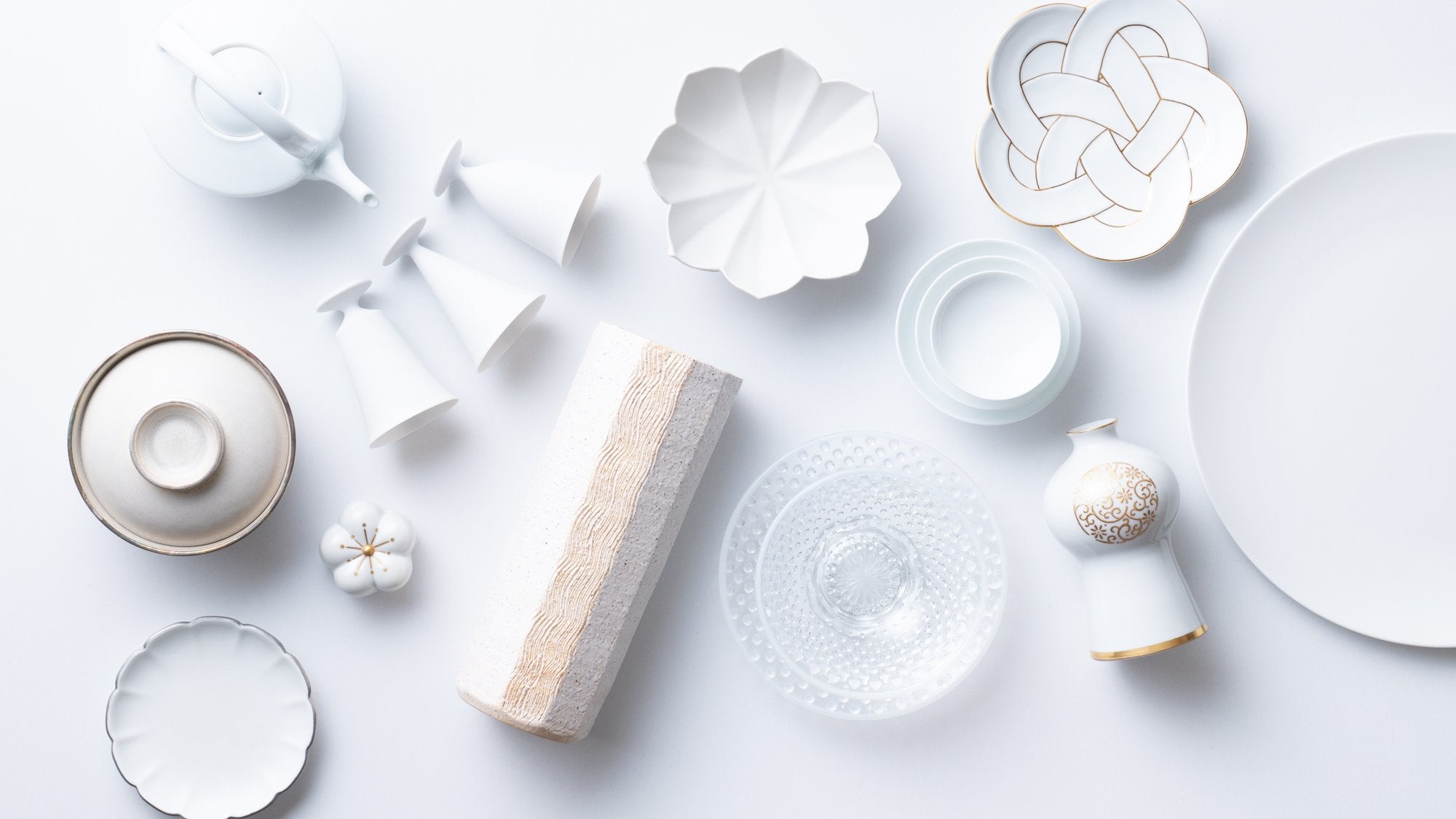
Guide to Japanese Plates
